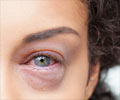The guidelines for automated preschool vision screening were revised based on new evidence.

The AAPOS Vision Screening Committee established the first guidelines for automated preschool vision screening in 2003. These primarily addressed the magnitude of refractive error that was (by consensus) thought to put a child at risk for the development of amblyopia. Since then, more data have emerged about the prevalence of amblyopia risk factors in young children from which it is clear that most children with these risk factors do not develop the condition. Likewise, technology has advanced, and screening instruments are now available that detect abnormalities other than amblyopia risk factors. The Committee has therefore reviewed the new evidence and adjusted its criteria.
"Over the last decade, automated methods for vision screening have progressed to the point where they are now extremely effective in identifying vision problems in children prior to their being able to read an eye chart," said lead author Sean P. Donahue, MD, PhD, of the Department of Ophthalmology and Visual Sciences, Vanderbilt University Medical Center, Nashville, TN. "It is exciting to see pediatricians adopt these technologies."
He continued: "If the detection of decreased vision and amblyopia are the goals of screening, then referrals based on technology that detects risk factors will result in over-referrals. It is therefore imperative that updated guidelines for detecting amblyopia risk factors propose levels that best separate those children who are most at risk for developing amblyopia from those who are not."
The Committee's recommendations include:
- Separate criteria for toddlers (12-30 months), early preschool children (31-48 months), late preschool and kindergarten children (49-72 months), and school-aged children (over 72 months) Advertisement
- Lower referral rate for young children by raising the threshold referral values
- Use of traditional optotype recognition screening option for school-age children who can read linear letters Advertisement
- Detection of visually significant media opacities and manifest (not intermittent) strabismus at all ages
- Instruments that detect amblyopia should report results using amblyopia presence as the gold standard
The Committee also noted that the U.S. Preventive Services Task Force (USPSTF) has specifically endorsed the use of photoscreening modalities for the detection of amblyopia risk factors in the 3- to 5-year-old age group.
Journal of AAPOS Editor-in-Chief Edward G. Buckley, MD, Professor of Ophthalmology and Pediatrics and Vice-Dean of Medical Education at Duke University School of Medicine, commented, "Early detection is critical if we are to be successful in eliminating unnecessary treatable vision loss in children. These new guidelines hopefully will allow children's health care providers to get one step closer to our goal."
Source-Eurekalert










